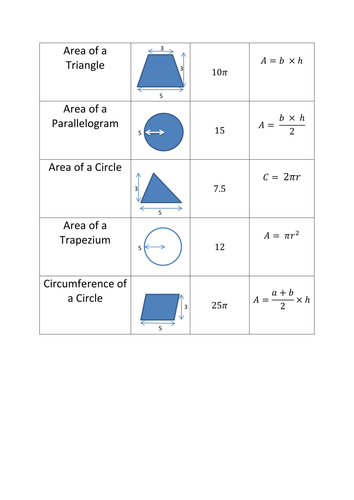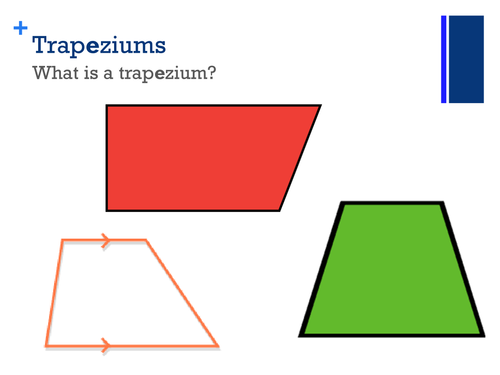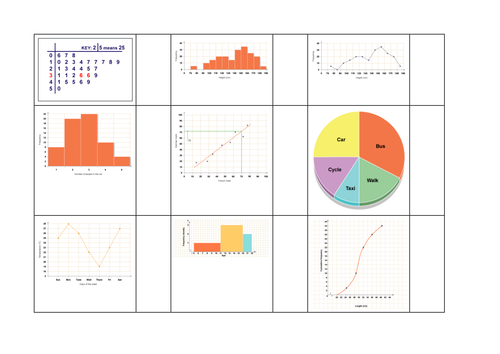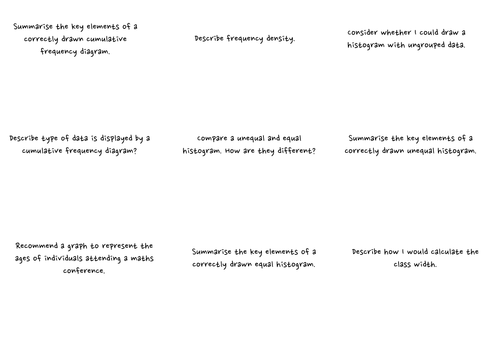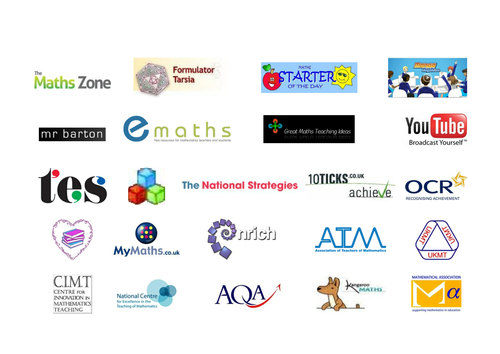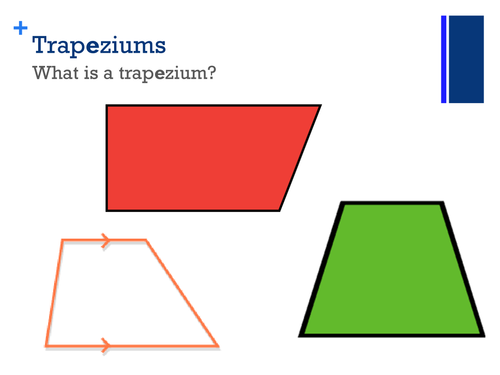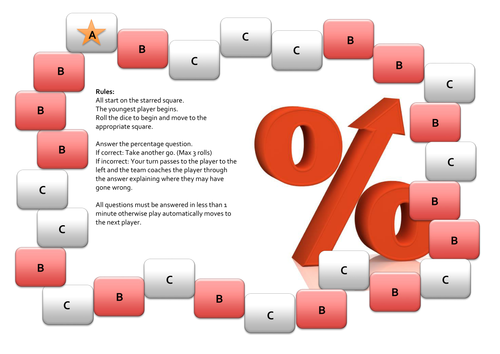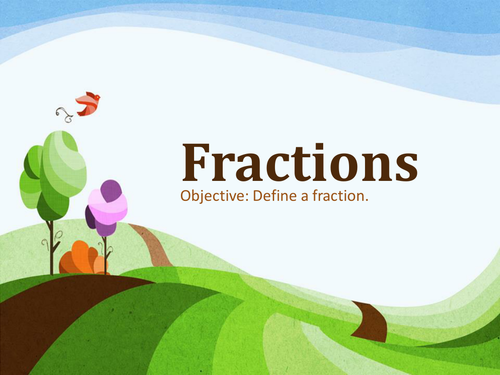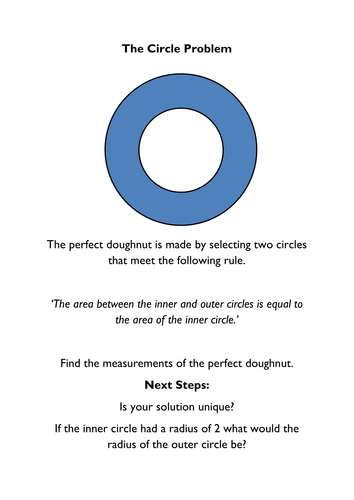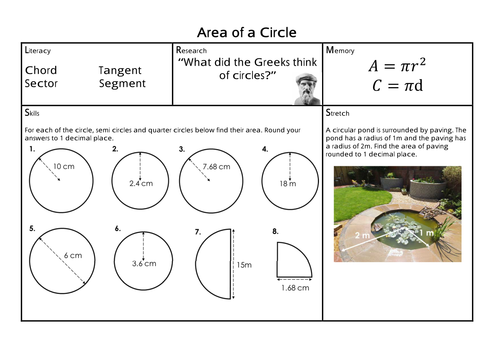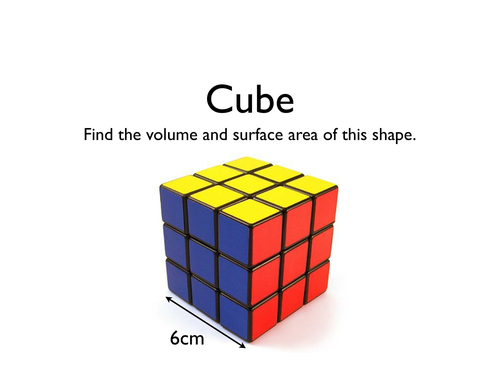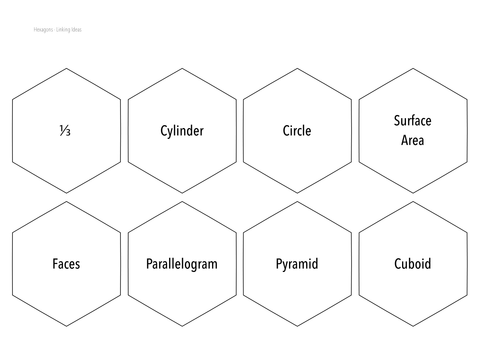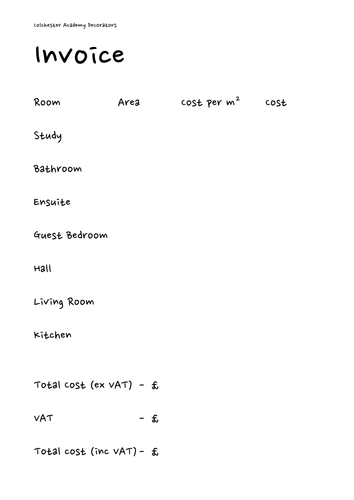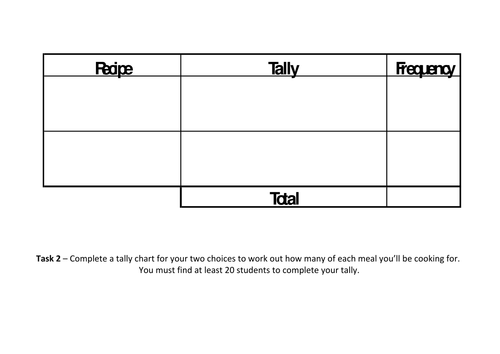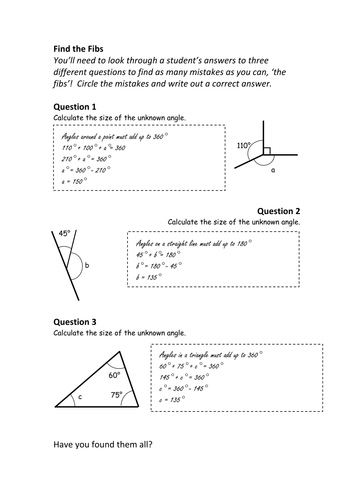
73Uploads
310k+Views
249k+Downloads
Mathematics

Area Formulae - Revision Sheet - KS4
Designed as a revision exercise for year 11s but equally applicable within KS4 and higher attaining KS3.
Matching description, formaule, diagram and answer(given diagrams dimensions). Designed to recap finding area of a variety of shapes including circles.

Calculating the Interior Angles of a Polygon (Including Extension Problems)
A selection of problems around interior angles for students to solve. Follows on from the investigation into how side lengths link to angle sums. Leads into exterior angles and other problems.
EDIT: The first 4 slides for part of an Always, sometimes, never questioning session that I haven't obviously highlighted. I am fully aware that trapezium's don't have right angles. The task is designed to illicit misconceptions! Apologies for forgetting to signpost!

Histograms Activities
A couple of activities to support lessons involving histograms. One a learner bingo and the other a True or False activity.

Inequalities Mini-Guide
A self contained document originally designed for varying tasks per table completed on a rotation basis. There are information sheets and questions sheets.
It has however since been used to create a mini booklet for individual work.

Rally Coach
Various 'Rally Coach' activities designed to aid cooperative learning though pupils coaching each other.

KS3 Maths Solving Equations Booklet
Designed for the Level 5 algebra: linear equations objective. The document graduates in difficulty, (differentiated for level 5a, 5b, 5c) and provides an example per level. The document emphasises the idea of balancing and use of inverse.

Interior Angles
A selection of problems around interior angles for students to solve. Follows on from the investigation into how side lengths link to angle sums. Leads into exterior angles and other problems.

Percentages Game Board
Students create their own percentage questions at grades B and C with bonus questions being made at grade A. Students create as opposed to answer ensuring they develop a generality as to the question types and can better identify the processes required.

What is a fraction?
The powerpoint used to create a near pod presentation. Couldn't share the NPP because of TES rules.

Area Problems
Three problems designed to get students learning by pursuing answers to big problems, consolidating understanding as they go.

Area of a Circle - PRET Homework
An interpretation of Maths PRET homework (see http://prethomework.weebly.com/about.html for details) on the theme of area of a circle.

Engaging Ideas
Here is a little bit of a crib sheet with lots of useful ideas.
I've been reading 101 Classroom Games, written from a PE perspective and been looking at how to use it in a maths context.
The problem being the context in which answers are given etc. Well worth a read but here is a selection of some of the ideas it has inspired and a crib sheet to keep them in mind and begin using them.

Transformations (with a focus on Translation)
A few resources I created a few years ago. They adapt the standard unit resources.

Volume and Surface Area Relay
Relay for volume and surface area.
Students apply the formulae provided on the exam paper to the full range of 3D shapes. They also have an opportunity to consider surface area.

Hexagons; promote discussion, learning links
These hexagons promote the discussion over length, area and volume for B to A* candidates.
The idea comes from a English observation mentioned on the website linked and has been put into a mathematical context.
Place like dominos explaining the decision for the tiles placement in its given location thus revealing the deeper understanding of the student.

School Canteen
Students run a school canteen.
1. They select 2 recipes to produce in their canteen.
2. They survey the class for demand for each dish using a tally chart.
3. They calculate the quantities required for each it recipe item in grams.
4. They round and convert into whole kg units to then cst each item.
5. They calculate profit by calculating total revenue and total cost.
This activity worked well just before Easter as a competitive challeneg completed in pairs with a middle attaining year 7 group.

Find the Fib - KS3 Angle Problems Worksheet
In this word document worksheet find the two mistakes hidden in 3 questions regarding angles around a point, a line and a triangle.

